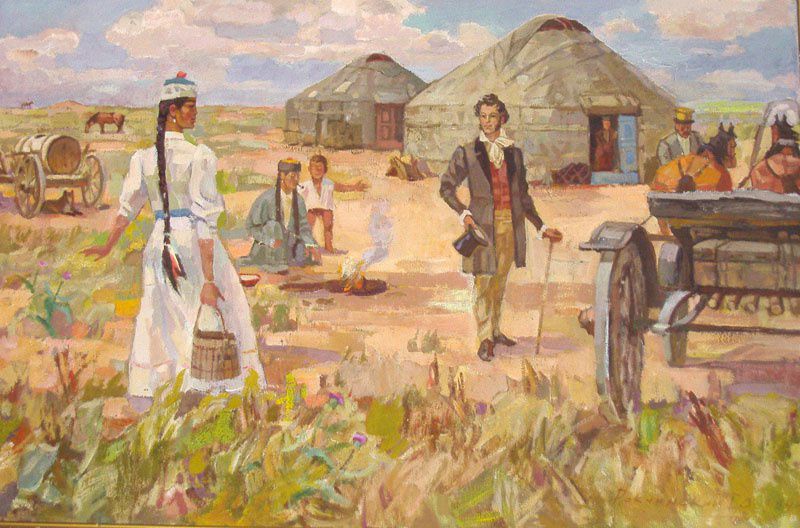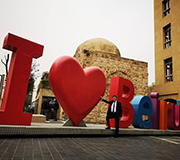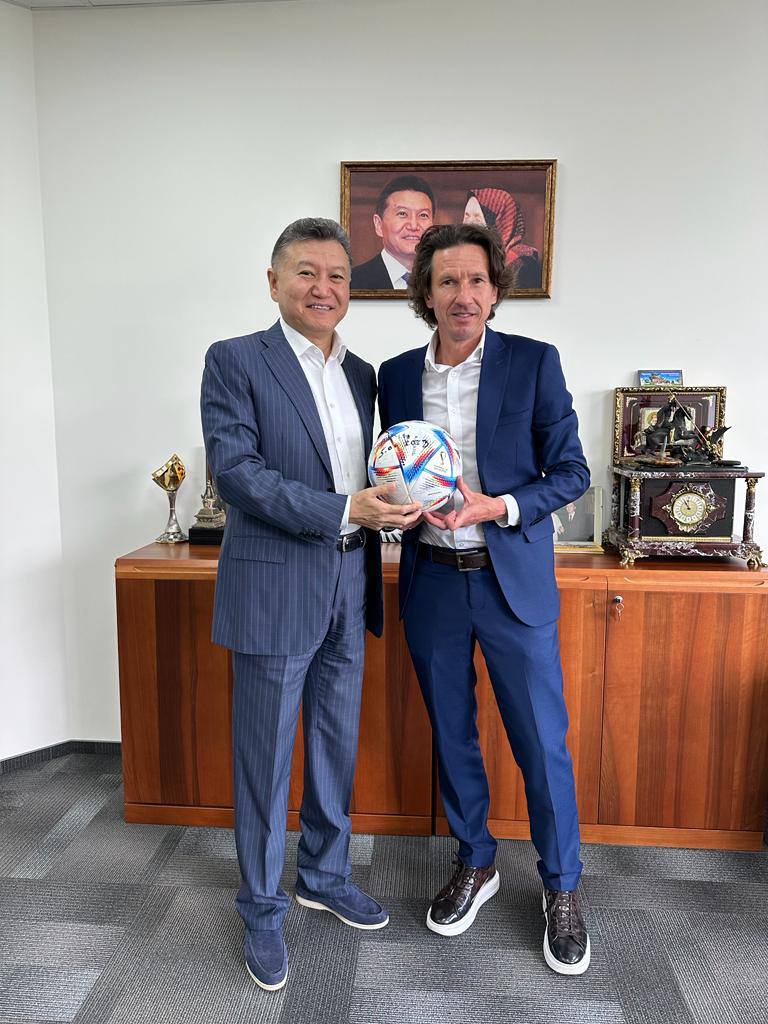In 2004, at a Chess World Championship, played as knockout matches, something great happened: the main prize was won by the 24 year-old grandmaster Rustam Kasimdzhanov from Uzbekistan, who was previously hardly known and nobody considered him a possible winner. Moreover, chess players held a poor opinion of his country. There are chess schools of Russia, the United States and Armenia, that are recognized by all. But Uzbekistan?
Possibly, Kasimdzhanov's victory became one of the first signs of the change of chess world’s leadership. Of course, this will not happen tomorrow but chess enthusiasts, with the support of the Uzbek authorities, are doing their best to achieve it.
Today, over 1,700 chess players are officially registered in the Uzbekistan Chess Federation, but there are much more game amateurs - one hundred chess clubs are open in Tashkent only. In 2016, at the tournament in memory of Chigorin, twelve-year-old Nodirbek Abdusattorov managed to beat the leading players of the world and got the title of the youngest grandmaster repeating the record of Sergey Karyakin. And I'm sure this is only the beginning.
On the initiative of the President of Uzbekistan Shavkat Mirziyoyev, chess are introduced in the training programme of 150 schools in the new academic year. And this is only a pilot project; later, the President intends to extend the practice of teaching chess in schools throughout the country. In accordance with the decree of President Mirziyoyev "On Additional Measures for the Development of Chess in the Republic of Uzbekistan," the Ministry of Public Education in conjunction with the Uzbekistan Chess Federation will develop and approve training programmes on this new subject for general schools.
The National Chess Federation’s activities are not limited by providing methodological assistance to education authorities. One of the first decisions of the UCF new head Dmitry Li was making teaching chess in the Republican Youth Sports School free of charge. By the way, Dmitry Robertovich is the deputy director of the National Project Management Agency, one of the main tasks of which is to increase the efficiency of state programmes and investment projects.
Of course, this is just a coincidence but a significant one. The authorities and society of Uzbekistan clearly consider the development of chess as a project aimed at the future. Its goal, as stated in the abovementioned presidential decree, is the development of the intellect and human intelligence. In other words, the harmonious improvement of the personality of the future citizen of Uzbekistan.
But, at the same time, it is a return to traditions, the revival of ancient intellectual practice of Uzbekistan people. Moreover, we can say with confidence that Uzbekistan is the cradle of chess in its current form.
So far, in reference books, manuals and internet, chess is believed to have originated in India. The most sensational find was made by Yury Buryakov, a professor at the National University of Uzbekistan. It happened not far from Samarkand when excavating the ruins of the ancient part of the city – Afrasiab in 1990. He found a truly unique set of seven delicately carved ivory miniature chess pieces that compiled the world's most complete collection of that nature: the shah (king), chariot, warrior on horseback, elephant rider, rider with the lion mask on his face and infantrymen.
Six years later, in 1996, Japanese archaeologists, during the excavations of the ancient site of the Dalverzin-Tepa in the southern part of Uzbekistan, found two unique chess pieces – an elephant and a zebu bull – which made it possible to establish that proto-chess was played on the ancient land of Uzbekistan already in the beginning of 2nd century AD.. It is believed that these are the most ancient artefacts of the game, found in the territory of Central Asia, if not in the whole world.
Comparison of these unique finds says a lot. The pieces found in Dalverzintepa were used for playing Chaturanga - the Indian variant of proto - chess. There were four players and the pieces were quite different from chess. However, the findings in Afrasiab are much closer to the chess we know.
Until recently they tried to explain the meaning of the word "shakhmaty" (Chess in Slavic languages, -Ed.) by Arab influence. Arab merchants took Chaturanga from India but managed to rename the game on the way to Europe. From history it is known that there were no shahs and padishahs from the 2nd to the beginning of the 16th century in India, which was ruled by the rajas. But shahs (or "shohs") existed in Central Asia. Moreover, the word "mot" is used in modern Uzbek as a "desperate situation" or "dead end", where the "shah" is being driven to. I mentioned only two of the most striking chess archaeological finds in Uzbekistan. But since then their number has grown significantly. Chess pieces are found in the ruins of palaces and in the place of shacks of artisans. Those pieces were made not only of ivory but also of the simplest materials: ceramics, glass, metal and even bones of domestic animals. This is a truly "the game of palaces and teahouses" as they say in the East!
In popular legends, the ruler of Samarkand Amir Timur is known not only as an invincible warlord but also as a skilful and enthusiastic chess player. One of such legends is depicted in the book by Georgy Alexandrovich and Yefim Stolyar - The Many-faced Kaissa. Once, at the moment of intense play, a messenger came to tell the ruler that his son was born and the city that was besieging his troops had fell. And just at that time Timur put his king (shah) and rook (rukh) under attack. "Shahrukh!" exclaimed Timur and that word became the name of his new-born son and the conquered city.
The combination of all these factors: the abundance and wide geographical distribution of chess finds, linguistic features, chronicles and folklore evidence allowed Academician Buryakov to propose a new version of the appearance of modern chess on the territory of Uzbekistan. From there through the Great Silk Road - one of the strongholds of which was ancient Samarkand - chess spread all over Europe and further up to Egypt.
The Old Bulgarian novel "Kormchiyata", dated to the 10th century, serves as a confirmation of Buryakov’s version. Its author uses the word "shakhmaty". As you know, the ancestral home of Bulgarians, the Volga Bulgaria had close economic ties with Bukhara and Samarkand, and it is not surprising that the Bulgarian merchants brought a new exciting game together with exotic goods to Russia and Europe.
Since we have started talking about the Great Silk Road, I cannot help mentioning the role played by ancient Uzbekistan in the spiritual life of Central Asia. There is a legend, according to which the brothers-merchants Tapassu and Bhallika from Bactria, after hearing about the teachings of the Buddha, set off to become his disciples and later, after returning home, began to spread Buddhism and build temples.
It’s hard to say whether this legend is true. Scholars even argue about the time when Buddhism penetrated the territory of present-day Uzbekistan. It could be at the end of a previous era or at the beginning of the present. However, there is no doubt that this theory was welcome there. Researchers are unanimous that Buddhism moved further from there to Kazakhstan, Tajikistan, Kyrgyzstan and China.
Maybe it is a coincidence, but Buddhism was widely spread in the first half of the second century AD in the territory of the Kushan Empire: that was when (according to archaeological data) modern chess began to form.
The almost forgotten Kushan Empire was once one of the largest states of the world. Appeared in Bactria, which had just been liberated from the occupation of Alexander the Great, this state in a short time captured territories of present-day Central Asia, Afghanistan, Pakistan and India. The peak of its power was reached under King Kanishka, who showed himself not only a successful warlord but also as a wise politician.
It was he who started to pay attention to teachers of Buddhism, who preached their doctrine on his land, and began to patronize them at the state level (although he, according to some sources, was a Zoroastrian at that time). According to the testimony of Chinese chroniclers, he erected many stupas and temples and eventually became a Buddhist devoting himself to the study of the sutras. It is believed that Kanishka began to send out Buddhist missionaries to all the countries of the world.
And to this day, they carefully preserve the Buddhist heritage in Uzbekistan. There are at least six major Buddhist monuments of the ancient period. Some of the most significant are in already familiar to us Dalverzintepa, where the temple and several Buddha statues have been found. In the city of Ayratam, there is a temple and monastery complex decorated with Buddhist sculptures. Buddhist culture can be clearly traced in the Ancient Termez.
Material evidence of the spread of Buddhism - statues of Buddhas and Bodhisattvas - are found in other parts of Uzbekistan. But this does not mean that Buddhism is the matter of past there. Today, it is the fourth most widely spread religion in this country. There are especially many Buddhists in the southern regions. In the Surxondaryo region one can find families, whose ancestors accepted Buddhism almost in the time of Kanishka.
After the attainment of independence by Uzbekistan, the local Buddhists received official recognition for the first time in many years. In 2001, a Buddhist temple was built in Tashkent. Followers gather and holidays are held there.
Therefore, I want to believe that the combined efforts of the authorities and the society of Uzbekistan, aimed at the careful preservation and development of ancient intellectual and spiritual traditions, will become the foundation of a powerful and respected state of the third millennium. There is no future without the past and there is no such a difficult situation that the experience and covenants of ancestors would not overcome.
I want to believe that in our difficult era of change, Uzbekistan will be reborn as a new world centre of intellectual and spiritual attraction. The whole history of this country says that there are no obstacles to achieve this goal.
FIDE President
Kirsan Ilyumzhinov
 We live in an era of change. There are new centres of power, new centres of cultural and spiritual attraction. I am sure that an ancient and still unknown to us Uzbekistan will becomeone of such centres.
We live in an era of change. There are new centres of power, new centres of cultural and spiritual attraction. I am sure that an ancient and still unknown to us Uzbekistan will becomeone of such centres. 






















